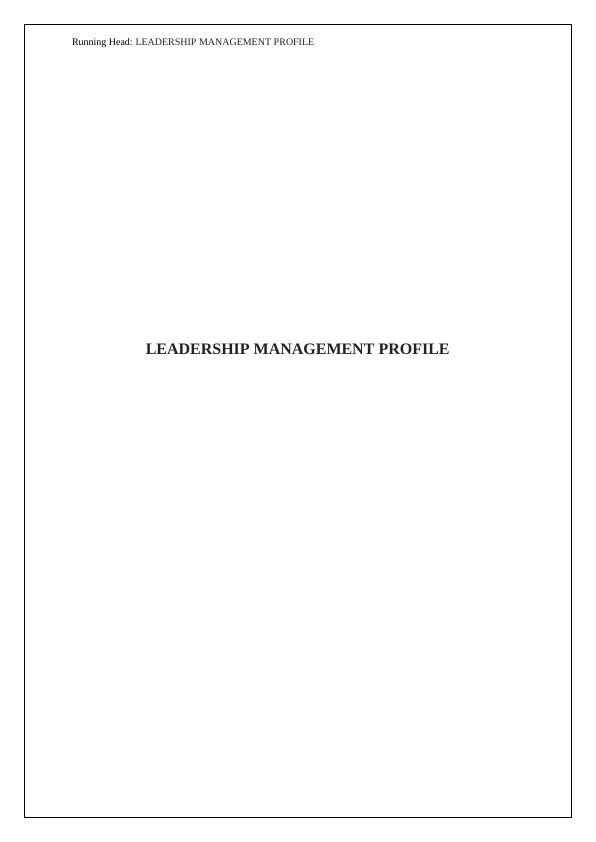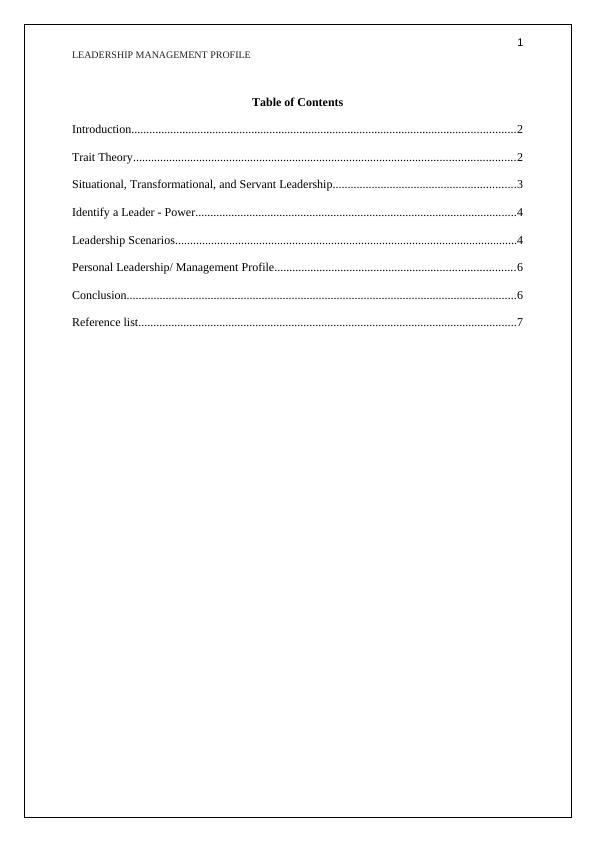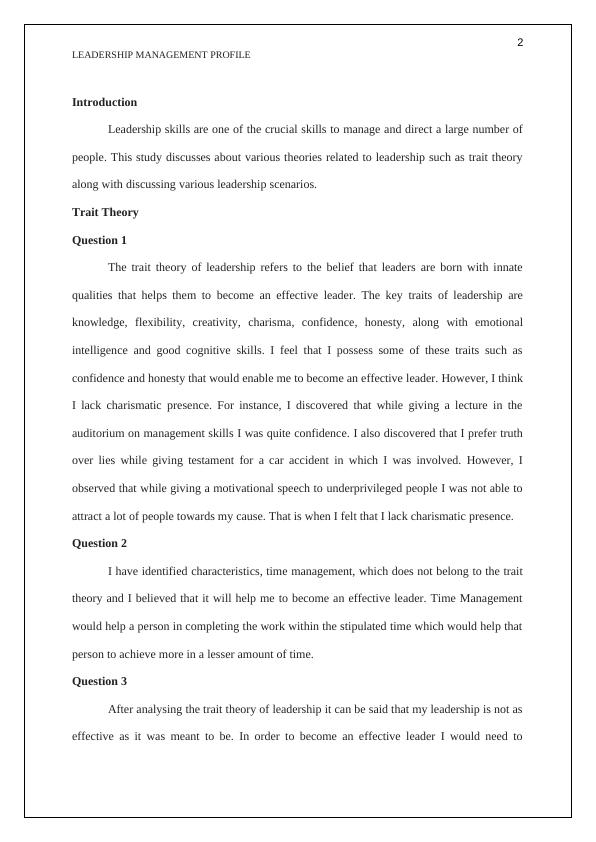Leadership Management Profile
Analyzing and applying leadership approaches to develop a personal management profile.
10 Pages1775 Words230 Views
Added on 2023-03-29
About This Document
This study discusses about various theories related to leadership such as trait theory along with discussing various leadership scenarios.
Leadership Management Profile
Analyzing and applying leadership approaches to develop a personal management profile.
Added on 2023-03-29
ShareRelated Documents
End of preview
Want to access all the pages? Upload your documents or become a member.
What is purpose of understand a concept
|8
|2035
|15
Trait Theory of Leadership management
|9
|2152
|278
Leadership Management Profile - Traits, Styles, and Scenarios
|11
|2497
|85
Criminal Justice Organisation
|3
|528
|21
Introduction to Management: Traits of Effective Leaders and Leadership Theories
|12
|2657
|84
Introduction to Management
|8
|2270
|325



